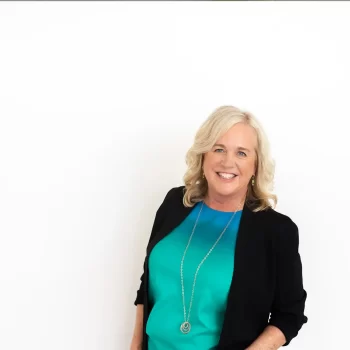How Much Time Should You Spend a Week on Marketing in 2023?
(Given all the buzz around using AI as a marketing assistant, I updated this post for 2023.)
The short answer is that you should spend around 30 percent of your time per week on marketing. The new AI tools like OpenAI’s ChatGPT and Google’s Bard may help you generate content more quickly, but that doesn’t necessarily mean you should spend less time on marketing. AND there’s more to marketing than content. WAY more.
How To Spend Your Marketing Time
The role of marketing is to connect the right people (people with a problem to be solved or a job to be done) with the right product or solution. Basically, it’s working on any part of your business that touches the customer. From a traditional academic perspective, we remember the components of marketing with the 5 Ps:
- Product: Your product, service or suite of offerings
- Pricing: How much you charge (and if you have any questions about that you should check out my lab class on pricing)
- Promotion: This is what most people are thinking when they hear the word marketing – advertising and social media
- People: Everyone on your team (real or bot) that your customer comes in contact with before, during and after the purchase
- Place: Whether your customers buy from you IRL or online and how they experience the purchasing process
How Much Time Should I Spend on Social Media Marketing?
- I think it helps to look at marketing as an investment. Even if you’re not using paid marketing tactics like advertising, you are investing your time at your hourly billing rate. So it makes sense to at least do a back of the envelope calculation on your ROI or return on investment for each task. In the end, what you want to figure out is whether or not your marketing efforts are getting you more customers.
ROI Example for Social Media Marketing Time
Your hourly billing rate: $100
Time spent on social media: 4 hours
Marketing investment: $400
ROI Calculation: [((Number of leads x number of conversions x average sales price) – marketing investment)/ marketing investment] x 100
So if your social media generates 100 leads a week and you average 1 sale at $100, then your calculation would look like this:
{((100x.01 x $100)-$400) /$400 = -75%
Yes, that’s a negative number and that’s not a good thing.
BTW – if you’re wondering whether or not your hourly billing rate is where it needs to be, check out my mini workshop, Find Your Ideal Price Point.
Here’s is my opinion on investing time in social media marketing:
- Yes you need to have a presence on one or two channels where you have verified your customers hang out (because you’ve asked them). It’s table stakes for most businesses of any size.
- Social media should be about three things: 1) Visibility – getting your potential customers to know, like and trust you, 2) Conversion – getting people to buy from you or at least getting them on your email list where you can pitch them, and 3) Loyalty – helping people stay connected to your brand. If your post isn’t connected to one of those things start over.
- Social media only works if you measure it (for instance when you post more does your email list grow?) and when it’s part of a larger marketing strategy that includes additional promotional tactics in addition to all the other “Ps” I mentioned above.
Why Is Marketing More Than Just Promotion?
The purpose of including all the other Ps in the concept of marketing is to remind you that the whole point of marketing is to help your customer solve their problem and to keep their priorities at the center of your strategy. If you’re spending all of your time on promotion and not seeing the results you want, it might be worth spending time on some of the other areas of marketing. For instance:
- When a customer purchases your product they are likely looking for a solution to a problem. Do you know what that problem is for your audience? Have you asked them?
- How are you pricing your offers? Could you bundle or unbundle things to offer more value or more price options?
- What is your customer experience like? How is the buying process? How about after they receive the product? How about customer support?
- Could you distribute your product in other places? On other people’s websites? In other geographies?
If you are looking for more sales, you need to regularly be considering new ideas in all of these area
Why the Alphabet Soup of the 5Ps of Marketing?
The concept of the Marketing Mix dates back to the 1960s, and originally there were only 4Ps. And the primary reason for thinking about them was to control marketing spend. The idea of calculating a marketing ROI back in those days wasn’t even a figment in someone’s imagination.
As competition for attention became more fierce and the science of marketing became more robust, various other Ps, (like People) were tacked on to help the framework stay relevant.
There are other constructs like the 4Cs – standing for customer, cost, convenience and communication. This idea is meant to encompass a customer-focused view of marketing, and the idea that with social media, a lot of marketing — especially consumer marketing — is a two way conversation.
Many of the articles I’ve read on the topic make and argument for one or the other. But in my mind, it’s not an either or framework. The two views are complementary.
The 5Ps are the choices you can make as a business owner to influence a customer to buy from you. The 4Cs are how a particular customer or customer segment might view those choices.
How Much Time Should I Spend On Each Marketing "P"?
My recommendation is that you set aside dedicated time to walk through each of the Ps and think about the ways you might use each aspect of the marketing mix to tell your story to the customer. It might break down into a work plan that looks something like this:
Marketing To Do List
Annually:
Set a revenue target and create a marketing strategy designed to support it. It should include goals like number of clients and total sales.
Quarterly:
Set a quarterly revenue target and specific marketing projects from your marketing strategy that you want to complete by the end of the period.
Monthly:
Set a marketing theme for each month. So maybe January is Product and you talk to customers about their problems. February is Pricing and you review the profitability of each of your offerings. March might be Place where you consider where people buy your product and if there are opportunities for growth in that area. When you get through all 5, start again.
Weekly:
Block off time on your calendar. Set aside 10-15% of total time as dedicated work time for promotional activities like social media or networking. Set aside an additional 15-20% for doing tasks associated with the monthly themes.
Review and Iterate:
As part of your quarterly planning process, review how allocating your time this way is working for you. Be thoughtful about which kinds of activities are driving revenue. Adjust and measure. If the plan isn’t working, change it.
Need a more comprehensive outline for your marketing plan? Here’s my post on How to Create an Effective Marketing Plan.
Key Takeaways: How Much Time Should I Spend On Marketing?
- About 30% or a day and change a week is a good rule of thumb.
- You need to be focusing on the full portfolio of marketing activities, not just promotion and definitely not just social media.
- You should be working from a plan that supports your business goals, not just throwing spaghetti at the wall and hoping something works. Think like a scientist here. Have a hypothesis about what’s going to happen, try something, see what actually happens and iterate from there.
Pro Tip: My FREE Learning Guide: 52 Ways to Grow Your Business That Are Not Social Media. will get your ideas flowing. Grab your copy now.





